Abstract
In response to modern events, every nation endeavors to develop plans to meet the challenges of disasters, but it is not possible to be prepared for every event and the ability to respond adequately is often limited. In the Republic of Korea, national disaster response efforts are defined by the Korea Basic Law for Disaster and Safety Management of 2004 and the establishment of the National Emergency Management Agency (NEMA) provides a framework for a holistic disaster prevention and recovery plan. However, the tragedy involving the sinking of the Sewol ferry in 2014 revealed a number of flaws in the current Korean disaster response system. In response to the shortcomings demonstrated in the Sewol incident, both NEMA and the Korean Coast Guard dissolved and the Korean disaster response system is being revised under the creation of the new Ministry of Public Safety and Security. However, the current national disaster management system still has many significant underlying and systematic problems that must be addressed. First, there is confusion concerning the responsible governmental organizations that will handle the various aspects of a comprehensive disaster management plan. Second, the relationships between the laws and government organizations involving planning, managing and reporting are in a vertical relationship, while the entities responsible for the actual response efforts exist in a horizontal relationship. This organizational limitation results in a slowdown of communication and confusion between the responsible parties. Thirdly, and consequently, there is a significant lack of unity and organization between the many organization responsible for disaster response. Finally, an efficient, accurate database of resources available to meet disasters remains to be developed. These and other limitations reveal that there is a significant amount of work that remains in order for Korea to have the same level of disaster response system of other developed nations.
References
1. Turner BA, Pidgeon NF. Man-made disasters. 2nd ed. Boston: Butterworth-Heinemann;1997. p. 72.
3. Petak WJ. Emergency management: A challenge for public administration. Public Adm Rev. 1985; 45:3–7.

4. Chung Ryu. Disaster management. 2nd ed. Seoul: Hansung Culture;2005. p. 40.
5. Comfort LK, Cahill AG. Increasing problem-solving capacity between organizations [Internet]. FMHI Publications Part 7. Boulder (CO): Natural Hazards Research and Applications Information Center, University of Colorado;1985. cited 2015 May 7. Available from: http://scholarcommons.usf.edu/fmhi_pub/7/.
6. Kim JS. The construction of emergency management organization in local government. Korea Local Adm Rev. 2008; 22:3–33.
7. Lim KS, Hwang SO, Ahn ME. Disaster emergency medicine. Seoul: Koonja Publishing INC;2010.
8. Ministry of government Legislation. Basic law for disaster and safety management [Internet]. Seoul (KR): Ministry of Government Legislation;c2015. cited 2015 May 7. Available from: http://www.law.go.kr/lsSc.do?menuId=0&subMenu=1&query=Basic%20law%20for%20disaster%20and%20safety%20management%20#liBgcolor0/.
9. Ministry of government Legislation. Emergency response activities and rules relating to on-site command [Internet]. Seoul (KR): Ministry of Government Legislation;c2015. cited 2015 May 12. Available from: http://www.law.go.kr/lsSc.do?menuId=0&subMenu=1&query=%EA%B8%B4%EA%B8%89%EA%B5%AC%EC%A1%B0%EB%8C%80%EC%9D%91%ED%99%9C%EB%8F%99%20%EB%B0%8F%20%ED%98%84%EC%9E%A5%EC%A7%80%ED%9C%98%EC%97%90%20%EA%B4 %80%ED%95%9C%20%EA%B7%9C%EC%B9%99#liBgcolor0/.
10. Ryu SL, Namkung ST. Analyze the act on disaster and safety management in Korea. Korean Rev Crisis Emerg Manage. 2011; 7:29–46.
11. Huh YJ. Problems in toxic materials information systems for disasters and mass casualties in Korea. J Korean Soc Emerg Med. 2007; 18:443–449.
12. Robert T. Stafford disaster relief and emergency assistance act as amended, and related authorities [Internet]. Washington, DC: Federal Emergency Management Agency;c2007. cited 2015 May 14. Available from: http://www.fema.gov/pdf/about/stafford_act.pdf/.
13. Cho SJ. Study on law and regime relating to the disaster and safety management. Korean Rev Crisis Emerg Manage. 2010; 6:1–18.
14. Hunter ND. The Law of emergencies: Public health and disaster management. 1st ed. Burlington: Elsevier;2009. p. 190.
15. Lee HD. Legal challenges for improving crisis management capacity enhancement: Legal system analysis and implication for crisis management of Japan. Korean Rev Crisis Emerg Manage. 2011; 7:57–76.
16. Ki TK. Legally consideration to the civil protection administration [Doctoral dissertation]. Kwangju (KR): Honam University;2008. 163–164.
17. Park DK, Yang GG, Ryu SL, Kang YS. The Disaster management system of local government in Europe countries: the characteristics and its implications of U.K and Germany. J Korean Public Police Secur Stud. 2012; 8:55–76.




 PDF
PDF ePub
ePub Citation
Citation Print
Print


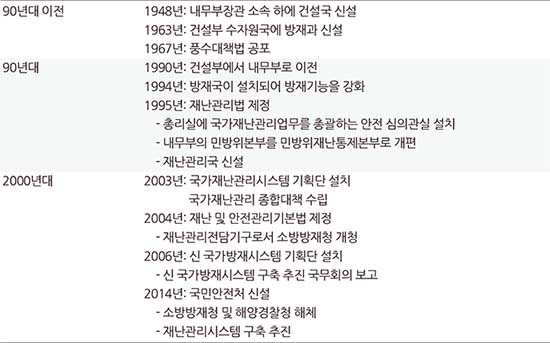
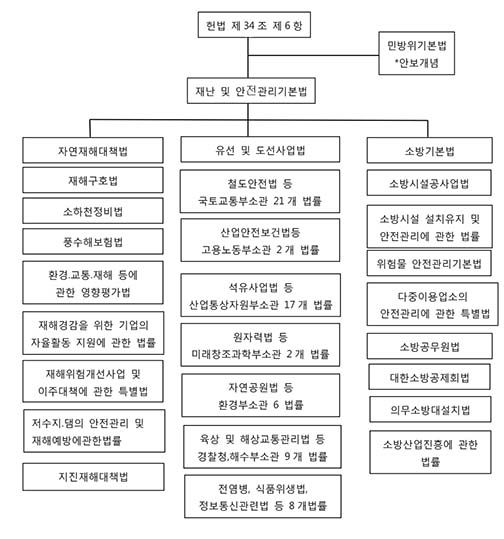
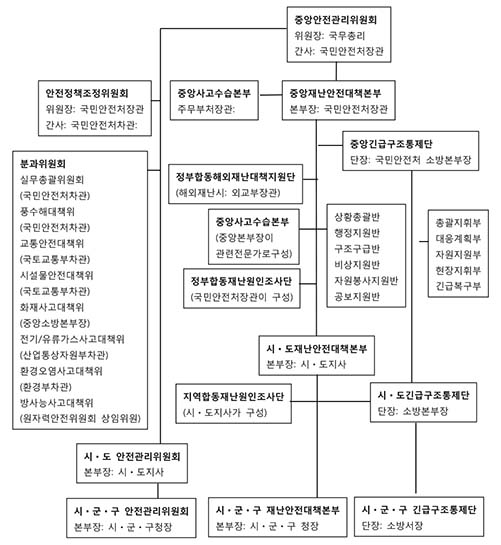
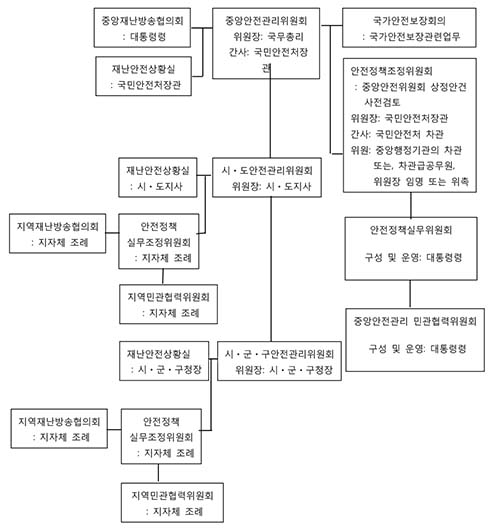
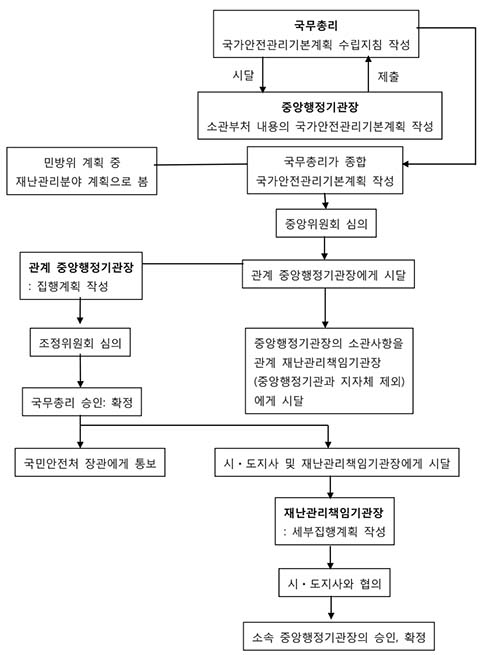
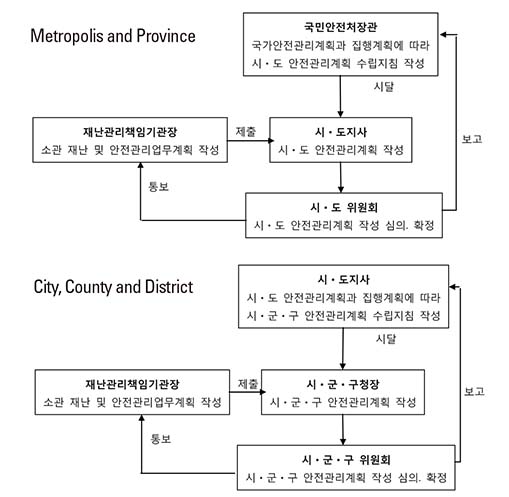
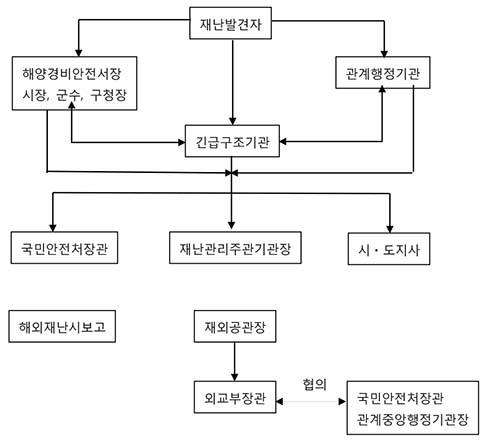
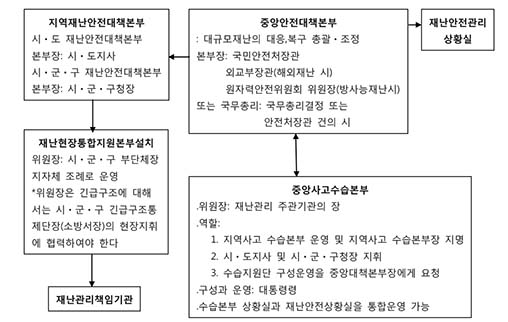

 XML Download
XML Download